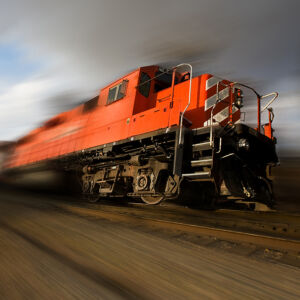If you want a case study in how red tape smothers innovation—even safety-driven innovation—look no further than what’s been happening with American rail. In theory, regulators and unions share a mission: protect workers and the public. In practice, they sometimes ally to resist proven, safer technologies.
It’s a perfect example of why Americans and our industries should be regulated based on evidence, not politics.
Start with automated track inspection (ATI). Instead of sending railway inspectors to walk miles of track, ATI mounts lasers, sensors and cameras on trains to scan every foot of rail—continuously, at line speed—and flag dangerous defects.
Improving inspections prevents derailments and saves lives. The Federal Railroad Administration (FRA) told Congress in 2023 that such systems have “helped drive down the number of track-caused derailments.” Every Class I railroad uses the tech today because it performs better than visual inspection.
So, what’s the problem? Under President Biden and despite its own findings, the FRA repeatedly refused to extend test-program waivers beyond 2022. While railroads are free to use ATI, they must also continue performing visual inspections required by 1970s regulations.
Just look at BNSF Railway’s experience. Despite a successful multiyear ATI pilot, Biden’s FRA refused to expand a waiver and let it replace some redundant visual checks. A federal appeals court stepped in last year, calling BNSF’s program “an unqualified success” and the FRA’s refusal arbitrary and capricious.
The court ordered the waiver expanded, but we’re still waiting on the FRA’s response. There’s still a chance for it to do the right thing and issue more waivers as a short-term fix.
As for the hesitation, it seems as though organized labor’s lobbying against reducing manual inspections—the argument that “fewer eyes mean more derailments”—has worked. The FRA’s acknowledgement that automated systems have reduced track-caused derailments, based on real-world data from carriers and pilots, has yet to overcome politics.
Ironically, ATI may not even cause railroads to shed jobs. Because these systems detect far more defects than visual inspection, they create additional work, shifting repair crews’ role from searching for problems to fixing more of them.
The same dynamic is playing out over train-crew staffing. Under President Trump in 2019, the FRA concluded that data from accidents and incidents “does not support” a minimum-crew-size regulation and withdrew a proposed federal mandate. In fact, for nearly two decades, the FRA has pushed for more automation and computer systems on trains to reduce the odds of human error causing an accident.
Yet five years later (again during the Biden years), the agency reversed itself and finalized a minimum-crew requirement on most freight trains. That mandate is now being challenged in court, and Congressman Eric Burlison recently introduced legislation to nullify it. When courts must force an agency to honor its own prior reasoning, something is broken.
You would think that a railroad safety agency would quickly embrace automation that enhances safety. But when innovation threatens powerful interests, the burden of proof gets flipped on its head. New, safer tools are treated as guilty until proven innocent in every imagined scenario. Agencies may acknowledge the benefits in reports and then slow-roll or constrain deployment in the field.
It wouldn’t be this way if we insisted on performance-based regulation. Rules should simply set measurable safety outcomes and then let operators meet them with the best possible mix of humans and machines.
On the rails, that means that automated inspection should count more than a handful of slow visual passes, provided some basic standards are accounted for.
Second, if an agency wants a nationwide crew mandate or any other questionable regulation, it should produce new evidence, including a transparent cost-benefit analysis, showing why the method delivers the greatest risk reduction. That’s basic administrative law, and it keeps policy anchored to outcomes rather than pressure politics.
Finally, rather than unreliable waivers, industries need scalable “sandboxes.” Here, regulators create safe spaces for testing with clear exit ramps. If a new practice meets agreed-upon safety metrics over a defined period, it should receive general authorization. That approach rewards proven gains and denies vetoes to those who simply prefer yesterday’s methods.
Technological progress is the ally of safety and prosperity. When regulators and unions link arms to defend the past against better tools, they don’t just slow innovation, they keep risk higher than it needs to be. We can do better by measuring what matters, trusting results over rituals, and clearing lingering red tape that keeps safer systems stuck on the siding.


